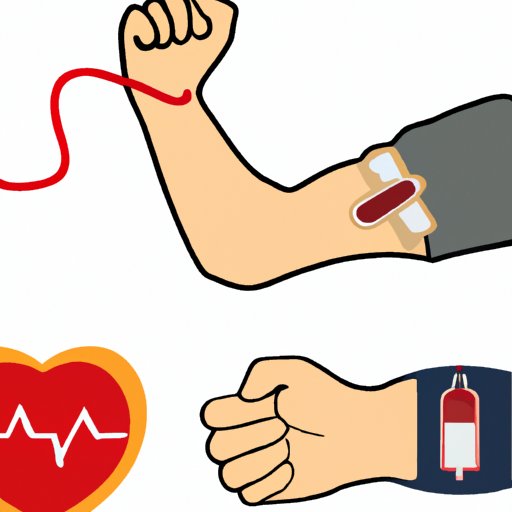
Introduction
Have you ever wondered why blood is so essential to our health and survival? This article aims to explore the vital functions of blood, explain why blood donation is essential, and address common misconceptions about blood. By the end of this article, readers will have a better understanding of why blood matters and how they can help ensure those in need receive it.
The Importance of Blood: Exploring the Vital Functions of Our Life-Sustaining Fluid
Blood is a vital fluid that plays critical roles in our bodies’ daily functions. Its primary roles include transporting oxygen and nutrients to our cells, fighting infections, and regulating body temperature. Hemoglobin, a molecule in red blood cells, helps transport oxygen to body tissues, and plasma helps transport nutrients, hormones, and other molecules. White blood cells play a vital role in fighting off infections and keeping us healthy. Blood also helps regulate body temperature by distributing heat throughout the body.
Without blood, our bodies wouldn’t receive essential nutrients or oxygen, making it impossible for us to continue living.
Donating Blood: How One Small Act Can Save Lives and Improve Health
Donating blood is something that can help save lives and improve our health. Every two seconds, someone in the United States needs blood, and one donation can save up to three lives. Before donating blood, potential donors undergo physical and health assessments to ensure they don’t have risk factors for donating. The donation process itself takes about 10-15 minutes, after which donors are advised to rest and drink fluids to replenish their bodies.
Blood donation also has benefits for the donor. One potential benefit is reducing the risk of heart disease. Regular blood donors have shown a reduction in the risk of cardiovascular events. Additionally, blood donation can reveal underlying health problems, including iron deficiency, the most common nutrient deficiency in the world.
Despite its many benefits, some people are reluctant to donate blood due to common concerns and misconceptions. One common concern is whether donating blood is safe. Donating blood is generally safe for most individuals, according to the American Red Cross. The organization takes precautions to make sure the donation process is safe and efficient. Additionally, potential donors undergo health screenings to ensure blood safety before donation and to prevent potential health risks after their donation.
Understanding the Science Behind Blood: How Its Components Work Together to Keep Us Alive
Blood is a complex fluid, and understanding its components is vital to understanding its importance. Blood consists of several components, such as red blood cells, white blood cells, plasma, and platelets. Red blood cells transport oxygen, white blood cells fight infections, plasma contains nutrients, hormones, and other molecules, and platelets help with blood clotting. Blood components work together to keep us healthy and alive.
Medical conditions can arise when there is an imbalance or deficiency of specific blood components. For example, anemia is a condition that occurs when there is a deficiency of red blood cells, which can cause fatigue and shortness of breath.
Blood Shortages and What You Can Do to Help: The Importance of Regular Blood Donation
There is an ongoing need for blood donations due to shortages and emergencies. Blood shortages can impact patient care and impede medical treatments. There are several ways to become a regular blood donor and help address the ongoing need for blood. Contacting your local blood donation center or visiting its website is the first step. Medical experts advise people to donate blood regularly to help ensure an adequate supply is available for emergencies.
Exploring the Myths and Misconceptions About Blood: Separating Fiction from Scientific Fact
There are several misconceptions about blood that need to be addressed. One common myth is that all blood types are interchangeable. There are eight common blood types, and a person cannot use just any blood type to replace their own in transfusions. Type O negative blood is often in high demand because it can be used in emergencies without regard to the recipient’s blood type.
Another misconception is that donating blood can weaken your immune system. Blood donation does not weaken or harm a healthy donor’s immune system. In fact, blood cell production typically increases after a blood donation, helping to compensate for the lost blood.
Conclusion
Now that you understand the importance of blood, you can make an informed decision to donate blood and help others in need. Donating blood is a simple and easy process that can save lives and improve your health. Remember that blood shortages are a real concern and that every donation counts. Become a regular blood donor, and you can help ensure that blood is available for those who need it in emergencies.




